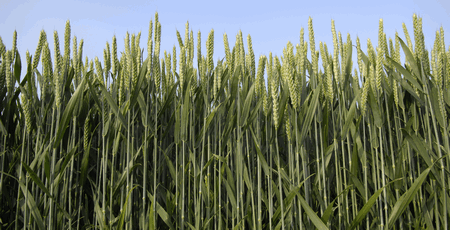High yielding feed wheat marks Syngenta Seeds return to Recommended List

A high-yielding, stiff-strawed feed wheat marks Syngenta Seeds return as a breeder to the HGCA’s Recommended List since Reaper was listed in 2000.
Duxford‘s introduction comes at a time when farmers are looking to produce more grain in response to the buoyant market, says the firm’s wheat expert Samantha Smith.
“With 106 for yield and a nine for lodging resistance, Duxford has the much needed combination of high yield and standing ability,” she explains. “That helps to remove some of the management challenges often associated with high yielding types.”
Duxford also has the best second wheat performance on the RL at 108% of the controls, she says. “At current prices, this means it will bring an additional £40/ha over traditional second wheat choices, such as Gladiator and Einstein.”

Disease resistance ratings are all five or above. “There are no glaring weaknesses and it gets a six for fusarium, which is important in second wheats.”
Originally evaluated as a Group 2 variety, Duxford has very good grain quality, which opens up end markets, she believes. “It does meet the full milling specification, with a good Hagberg, grain protein and specific weight.”
She predicts it will take 3.5% of the market this autumn. “That will be due to its combination of yield, standing power and suitability as both a first and second wheat.”
Her colleague, Simon Phillips points out that Duxford is a fast developing variety, making it important that growers drill it from mid September onwards, to avoid tall, lush crops by early spring. “Use 200 seeds/sq m in mid-September, increasing the rate to 350 seeds by late November or early December, after roots.”
Duxford responds well to managed fungicide inputs, recording a yield increase of between 2t and 2.5t/ha in trials, notes Mr Phillips. “Because it is so stiff strawed, a standard PGR programme is all that is needed.”
In normal situations, that means applying 1.5 litres/ha of chlormequat at GS30-31, he advises. “Only on very fertile sites will you need a two spray programme.”
Nitrogen use shouldn’t exceed 180kg/ha for feed end use. “If you’re growing it for breadmaking, then 200-220kg/ha will be required, with 40-60kg being applied at flag leaf fully emerged.”
Duxford
- First RL wheat variety for Syngenta Seeds since 2000
- Group 4 feed wheat
- High yielding (106%)
- Best second wheat yields (108%)
- Strong standing (9)

